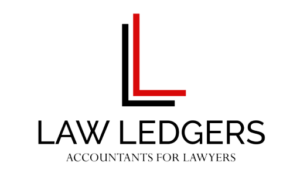Tackling Imbalances in Multi-Year Escrow Reconciliation
Expert Solutions for Navigating the Challenges of Escrow Account Discrepancies
At Law Ledgers, we understand the unique financial challenges that legal professionals face, particularly when managing client funds in escrow accounts. One such challenge is the reconciliation of multi-year escrow accounts when the balance is off. In this post, we will explore the complications associated with escrow account imbalances and share effective strategies to resolve these issues with minimal disruption to your legal practice.
Identifying the Root Cause of the Escrow Account Imbalance
- Misallocated funds
- Clerical errors
- Unauthorized transactions
The first step in resolving an escrow account imbalance is identifying the root cause of the discrepancy. Identifying the source of the problem is crucial, as it determines the appropriate corrective action and helps prevent future occurrences. One of the most common causes of discrepancies is misallocated funds. This issue can arise when funds are inadvertently deposited into the wrong account or allocated to the wrong client. For example, an attorney may mistakenly deposit funds intended for Client A into Client B’s account, creating a discrepancy in both clients’ balances. In such cases, it’s essential to review all deposit and disbursement transactions to ensure the funds are correctly assigned to the respective clients.
Another prevalent cause of escrow account imbalances is clerical errors. These mistakes can range from simple data entry errors, such as transposing digits or omitting decimal points, to more complex issues like double-posting transactions or failing to record a transaction altogether. When reviewing your account records, pay close attention to the details of each transaction, including dates, amounts, and descriptions. It’s also essential to cross-reference your records with bank statements to identify any discrepancies that may have resulted from miscommunication between the bank and your office. Under the New York Rules of Professional Conduct, Rule 1.15 mandates that attorneys maintain complete and accurate records of client property and perform regular reconciliations.
Unauthorized transactions are another potential cause of escrow account imbalances. These transactions can occur due to fraudulent activities, such as identity theft, embezzlement, or phishing scams, which could lead to unauthorized withdrawals or deposits. To detect and prevent unauthorized transactions, it’s crucial to have stringent security measures in place, such as strong passwords, multi-factor authentication, and regular monitoring of account activity. If you discover an unauthorized transaction, it’s essential to report the issue to the bank and relevant authorities promptly.
Implementing Systematic Escrow Account Reconciliation Processes
- Periodic account reconciliation
- Utilizing accounting software
- Segregating duties
To prevent future imbalances, it’s essential to establish a systematic reconciliation process. This includes conducting periodic escrow account reconciliations, working with accounting professionals to automate the process, and segregating duties to ensure checks and balances. These practices can help identify potential discrepancies early on, preventing them from snowballing into more significant issues over time.

Engaging Expert Assistance
- Enlisting a professional accountant
- Consultation and advisory services
- Compliance with legal and ethical obligations
In complex cases, enlisting the help of a professional accountant, like our team at Law Ledgers, can be invaluable. Our expert consultation and advisory services will ensure that your escrow accounts are reconciled accurately, while also ensuring compliance with legal and ethical obligations. With our specialized knowledge of the legal industry, we can offer tailored solutions to address the specific needs of your practice.
Establishing Clear Communication Channels
- Communicating with clients
- Transparency and trust
- Proactive problem-solving
Another crucial aspect of resolving escrow account reconciliation imbalances is clear communication with your clients. By being transparent about any discrepancies and proactively addressing their concerns, you can maintain trust and effectively resolve issues as they arise.
Adopting Preventative Measures
- Regular training and education
- Robust internal controls
- Continuous improvement
Lastly, adopting preventative measures can help mitigate the risk of future escrow account imbalances. This includes providing regular training and education for your team, implementing robust internal controls, and fostering a culture of continuous improvement. By taking a proactive approach, you can minimize the likelihood of encountering multi-year escrow reconciliation complications in the future.
At Law Ledgers, we understand the importance of accurate escrow account management for legal professionals. Our team is dedicated to helping you navigate the complexities of multi-year escrow reconciliation, ensuring that your accounts are always balanced and compliant with industry regulations. If you’re struggling with escrow account imbalances or need assistance in implementing best practices, contact our team of experts today for personalized guidance and support.









